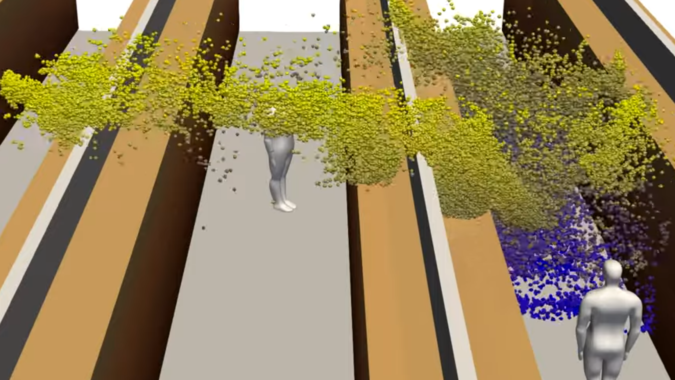Some of the most pressing questions about COVID-19 relate to some of our most common activities. How likely is it to get the virus in a shop, or when you’re walking on the street? How far can the germs spread when you sneeze?
These are all important questions and although they refer to rather mundane activities, they’re actually very difficult to answer. In order to address them, a team of Finnish researchers is using computer simulations to see how aerosols can spread in closed spaces like grocery stores.

Sneezing is a very common thing, we do it all the time. But at the same time, it’s a surprisingly complex phenomenon. For instance, in 2016, an MIT study found that sneezing doesn’t simply produce a spray of droplets, it produces a complex fluid cascade, moving and breaking apart in air in ways that are often hard to predict. Modeling this phenomenon requires well-tailored algorithms and some serious processing power.
With this in mind, a team of researchers from Finland have been using the supercomputer at the Finnish IT Center for Science to model a scenario where a person coughs in an aisle between shelves, like those found in grocery stores (taking ventilation into account).
The project involves around 30 researchers (including specialists on fluid dynamics, aerosol physics, social networks, ventilation, virology, and biomedical engineering) from the Aalto University, Finnish Meteorological Institute, VTT Technical Research Centre of Finland and University of Helsinki. They are especially focusing on how small airborne aerosol particles emitted from the respiratory tract when sneezing or even just talking are transported through the air.
The researchers modeled scenarios where a person would cough or sneeze in an aisle between shelves, for instance in a grocery store. The researchers found that even when considering room ventilation, the aerosol cloud spreads and dillutes over the course of several minutes.
“Someone infected by the coronavirus, can cough and walk away, but then leave behind extremely small aerosol particles carrying the coronavirus. These particles could then end up in the respiratory tract of others in the vicinity,” explains Aalto University Assistant Professor Ville Vuorinen.
These particles could carry pathogens such as coronaviruses. Researchers still aren’t sure exactly what types of particles can carry the novel coronavirus, but studies of influenza A have confirmed that the virus can be found in the smallest particles, which measure less than 5 micrometers.

The project did not analyze whether these particles can actually carry the virus but instead models the physics of aerosol and droplet transmission, based on previous research. The aim is to produce clear visualization to help understand the behavior of these particles.
Experts in infectious diseases and virology will examine the results and their importance in relation to the information being gathered on coronavirus and coronavirus infections, attempting to better understand how transmission occurs.
The spread of disease through social nodes (such as supermarkets) plays an extremely important role in the current pandemic. These visualizations show that in such a closed environment, particles can spread surprisingly far, and remain afloat for several minutes.
This highlights the importance of avoiding busy indoor areas as a way to reduce the risk of droplet infection which, according to current information, is the main cause of coronavirus infection. Another important takeaway is the usage of face masks in these areas.
“The preliminary results obtained by the consortium highlight the importance of our recommendations,” said Jussi Sane, chief specialist at the Finnish Institute for Health and Welfare. “[We recommend] that you stay at home if you are unwell and that you maintain physical distance with everyone. The instructions also include coughing into your sleeve or a tissue and taking care of good hand hygiene.”
However, Sane cautioned that the study, while helpful, is not yet grounds for issuing new or modified recommendations.


